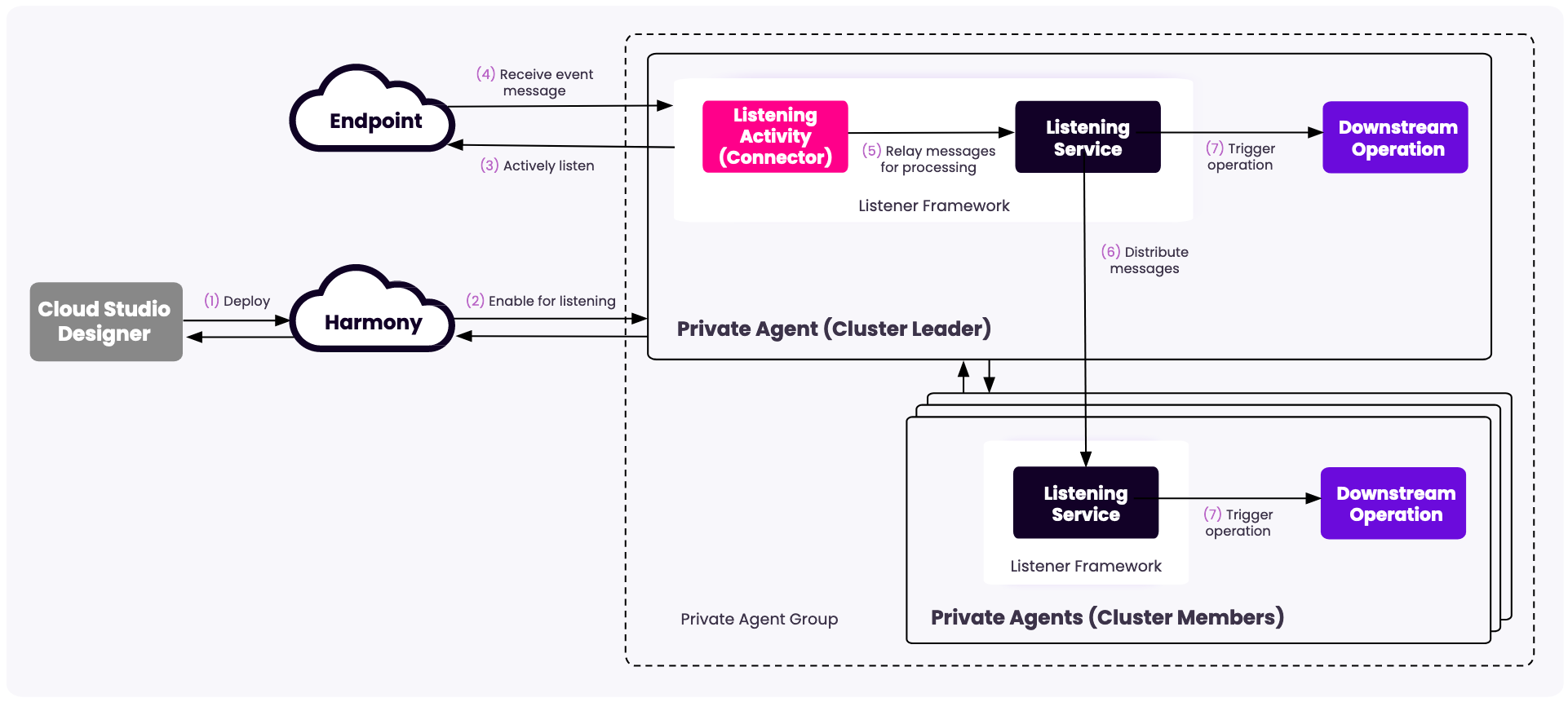Arquitectura del servicio de escucha para agentes privados de Jitterbit
Introducción
El servicio de escucha puede ejecutar una operación de integración cuando se produce un evento en un extremo. Funciona únicamente con conectores y actividades compatibles, y únicamente en grupos de agentes privados.
Diagrama de arquitectura
Este diagrama muestra cómo se mueve un mensaje de evento a través del sistema cuando se utiliza un solo agente privado:

-
Se implementa una operación que contiene un conector configurado con una actividad de escucha de eventos y se habilita para la escucha. Una actividad de escucha se puede utilizar en muchas operaciones y proyectos para recibir el mismo evento, pero procesarlo de forma diferente.
-
El servicio de escucha dentro del agente iniciará un oyente para esa operación.
-
El oyente comenzará a escuchar activamente cualquier notificación de eventos del extremo.
-
Cuando ocurre un evento en el extremo, este publica una notificación de evento que pueden recibir sus suscriptores.
-
El oyente capta el mensaje de notificación del evento.
-
Si hay un agente en el grupo de agentes, el receptor transmite el mensaje de evento a la operación. Si el grupo de agentes contiene la cantidad mínima para permitir capacidades de servicio de escucha completas, el mensaje de evento se transmite al agente con la menor carga de trabajo.
-
Al recibir la notificación del evento, la operación activará una operación abajo en la cadena.
Cuando el servicio de escucha está deshabilitado, los agentes de un grupo de agentes se comunican directamente con Harmony. Cuando está habilitado y hay una cantidad mínima de nodos de agente activos, los agentes se comunican entre sí para formar un clúster. El primer agente registrado se designa como líder del clúster. El líder es responsable de recibir mensajes y distribuirlos a los miembros del clúster para su procesamiento. El líder del clúster distribuye la carga entre todos los agentes y garantiza que no haya dos agentes que procesen el mismo mensaje.